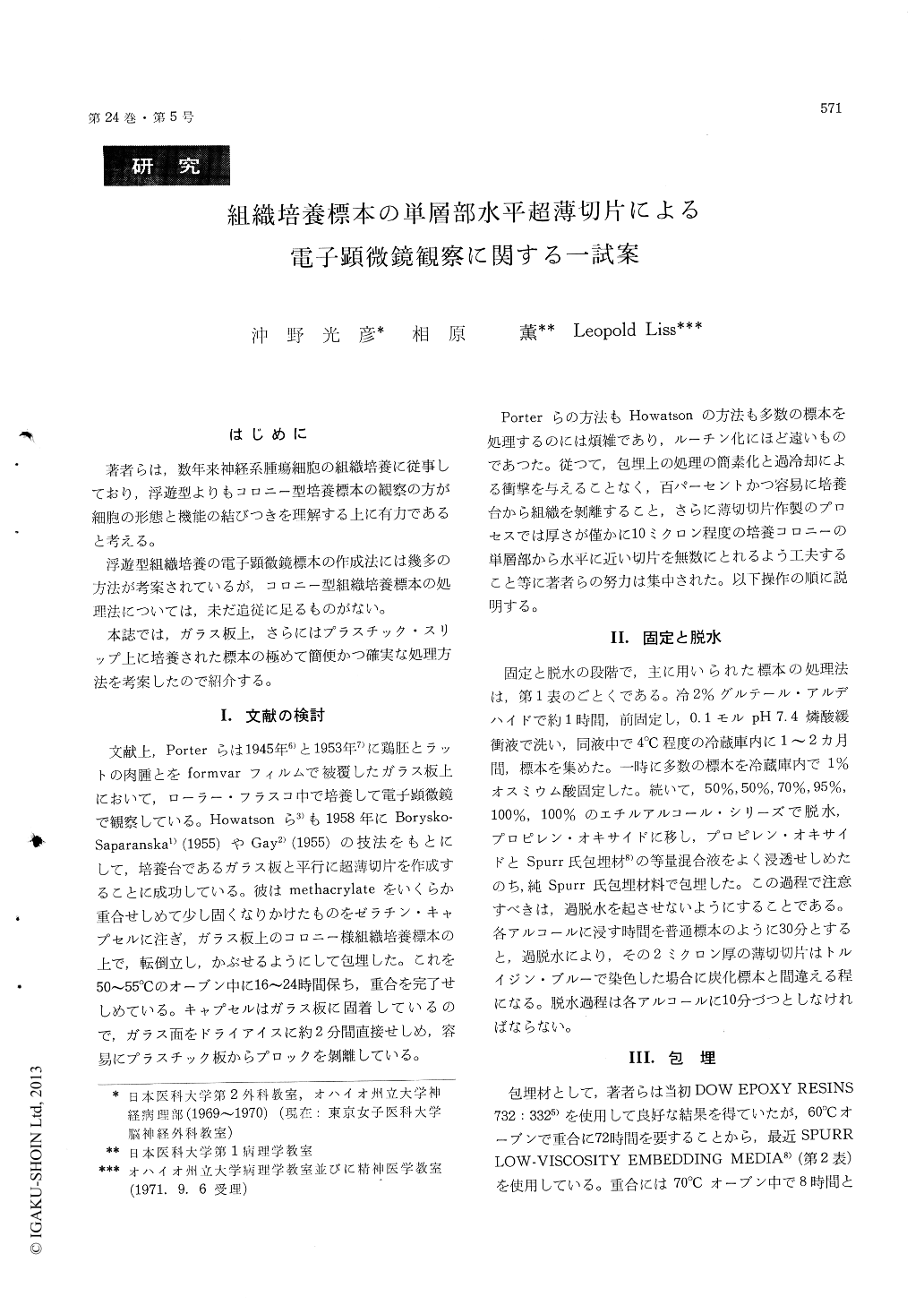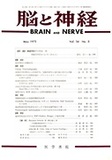Japanese
English
- 有料閲覧
- Abstract 文献概要
- 1ページ目 Look Inside
はじめに
著者らは,数年来神経系腫瘍細胞の組織培養に従事しており,浮遊型よりもコロニー型培養標本の観察の方が細胞の形態と機能の結びつきを理解する上に有力であると考える。
浮遊型組織培養の電子顕微鏡標本の作成法には幾多の方法が考案されているが,コロニー型組織培養標本の処理法については,未だ追従に足るものがない。
Reports of electron microscope studies with tissue culture materials are increasing in the field of neurological science. Most of them reveal electron micrographs of the central areas of tissue culture colonies and of the vertical sections dimensionally. Howcver, our knowledge of tissue culture with phase microscope and with regular light microscope arc that of peripheral and mainly monolayer area of colony in horizontal view in dimension. We tryed to section the monolayer area in the plane-parallel dimension. After a lot of fault, we have succeeded to make this difficult technique a routine work in the laboratory.
Main points of the technique are 1) the dimen-sionally scheduled embedding of material into plastic embedding media, 2) approximately ten degrees of heeling in the facing angle between the embedded material surface and a knife edge, and 3) using of diamond knife for ultra-thin sectionings.
Dimensional observation under electron micro-scope of both vertical and horizontal sections of sissue culture colonies disclosed a clear cut mor-phology by areas, dividedly three of the central, the intermediate and the peripheral areas in the colonies. The central area is composed of necro-biotic debris. The intermediate area reveals re-markable increasing of inclusion bodies, which are seen as granules under phase microscope, or dense bodies under light microscope. The peripheral area can be said to be composed of newly prolif era ted cells in vitro and almost no inclusion bodies was seen in the early stage of tissue culture.

Copyright © 1972, Igaku-Shoin Ltd. All rights reserved.


